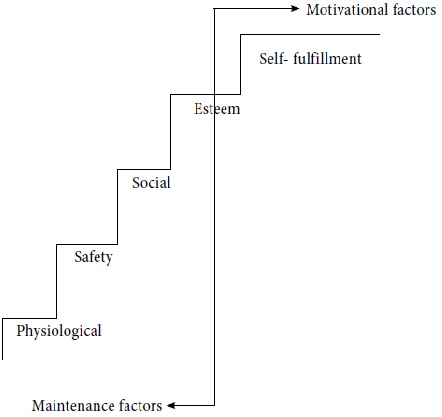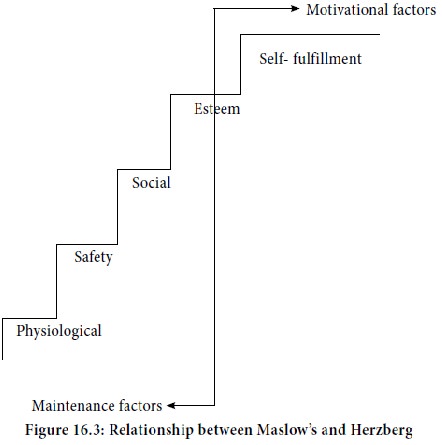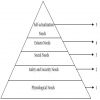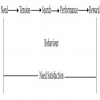Home | ARTS | Management Concepts & Organisational Behaviour
|
Comparison of Herzberg and Maslow Models - Motivation
Management Concepts & Organisational Behaviour - Motivation
Comparison of Herzberg and Maslow Models - Motivation
Posted On :

In fact, there is a great similarity between Herzberg’s and Maslow’s models.
Comparison
of Herzberg and Maslow Models
In fact, there is a great similarity between Herzberg’s and Maslow’s models. A close examination of Herzberg’s model indicates that some employees may have achieved a level of social and economic progress in the society and for them higher level needs of Maslow (esteem and self-actualization) are the primary motivators. However, they still must satisfy the lower level needs for the maintenance of their current state. Thus, we can say that money might still be a motivator for operative employees and

In fact, there is a great similarity between Herzberg’s and Maslow’s models. A close examination of Herzberg’s model indicates that some employees may have achieved a level of social and economic progress in the society and for them higher level needs of Maslow (esteem and self-actualization) are the primary motivators. However, they still must satisfy the lower level needs for the maintenance of their current state. Thus, we can say that money might still be a motivator for operative employees and

As
shown in the following diagram Maslow’s Physiological, security and social
needs come under Herzberg’s maintenance factors whereas self-fulfillment comes
under motivating factors. It may further be noted that a part of esteem need
comes under maintenance factor and another under motivational factors. The
esteem needs are divided because there are some distinct differences between
status per se and recognition. Status tends to be a function of position one
occupies. This position may be gained through family ties or social pressures
and so this may not be a reflection of personal achievement or recognition.
Recognition is gained through competence and achievement. It is earned and
granted by others. That is why status is classified with physiological, safety
and social needs as a hygiene factor, while recognition is classified with
esteem as a motivator.
Tags : Management Concepts & Organisational Behaviour - Motivation
Last 30 days 570 views














